Kleinwalsertal in Vorarlberg - hiking and caravanning
- Written by Portal Editor
As part of our project "Cultural journey along the Roman road system", the topic of mountain hiking is for us, in addition to attractive sports, outdoor and leisure activities for everyone, which can be carried out without large investments in equipment or local facilities, also an important topic that is meaning of the project could be successfully implemented elsewhere.
We recently reported on the Via Egnatia Foundation, whose leadership in persona Marietta van Attekum is working very hard to create a long-distance hiking trail along the Via Egnatia through Turkey, Greece, Macedonia and Albania.
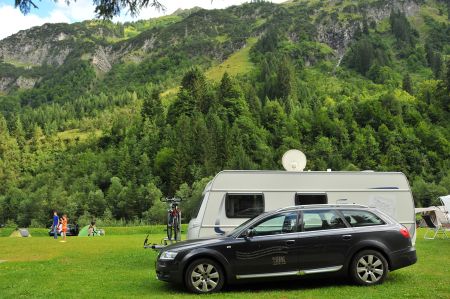 Local institutions often just lack the ideas and courage to implement them. Without a doubt, the Kleinwalsertal must be seen as one of the exemplary regions for hiking, where mountain hiking has long since developed into an essential factor in gentle tourism.
Local institutions often just lack the ideas and courage to implement them. Without a doubt, the Kleinwalsertal must be seen as one of the exemplary regions for hiking, where mountain hiking has long since developed into an essential factor in gentle tourism.
Since there are other special features of this unique region, it was obvious to present the project and team on site in order to subsequently report extensively on their facilities and offers.
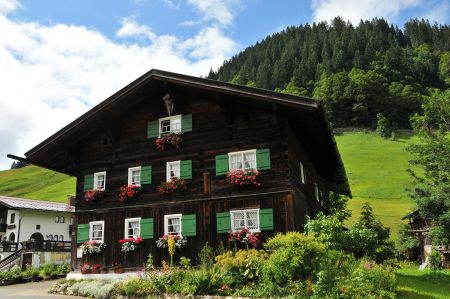 The first contact could once again be made via the Internet by contacting the Kleinwalsertal Tourist Office. Here we met Mr. Elmar Müller, who answered our first e-mail in his function as press spokesman and established the connection to his colleague Ms. Brutscher. An appointment followed for a first on-site meeting. So, as I said so often in the context of the project, let's go, this time to the Kleinwalsertal.
The first contact could once again be made via the Internet by contacting the Kleinwalsertal Tourist Office. Here we met Mr. Elmar Müller, who answered our first e-mail in his function as press spokesman and established the connection to his colleague Ms. Brutscher. An appointment followed for a first on-site meeting. So, as I said so often in the context of the project, let's go, this time to the Kleinwalsertal.
It is probably not necessary to say something extensively about the Kleinwalsertal at this point, because as a tourist stronghold for hiking and skiing, the valley has been a fixture for many travellers for years. Nevertheless, there are some points that make this valley unique in connection with other properties, from which we would like to mention two points at this point.
Geographical location of the Kleinwalsertal
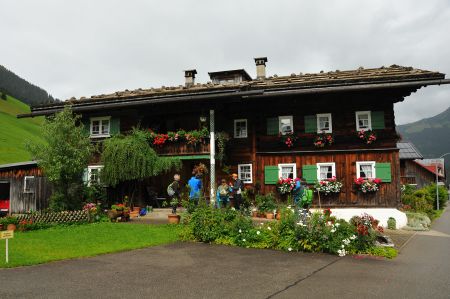 As part of the Austrian state of Vorarlberg, the Kleinwalsertal with the municipality of Mittelberg belongs to the district of Bregenz, which in itself is not unusual. If you drive into the valley via Oberstdorf, you cross the Austrian state border, which, however, like everywhere else since joint EU membership, is no longer felt to be a state border. Good this way! However, it is interesting that this road coming from Oberstdorf is the only transport connection to the road network, because there is no direct transport connection to the rest of the Vorarlberger Land. In other words, the valley can only be reached from the neighbouring municipality of Oberstdorf in Bavaria, i.e. Germany. From a German point of view, the Kleinwalsertal is a so-called functional enclave, also known as the Pene enclave. Against this background alone, a region that can refer to a large number of special circumstances. We will come back to this separately.
As part of the Austrian state of Vorarlberg, the Kleinwalsertal with the municipality of Mittelberg belongs to the district of Bregenz, which in itself is not unusual. If you drive into the valley via Oberstdorf, you cross the Austrian state border, which, however, like everywhere else since joint EU membership, is no longer felt to be a state border. Good this way! However, it is interesting that this road coming from Oberstdorf is the only transport connection to the road network, because there is no direct transport connection to the rest of the Vorarlberger Land. In other words, the valley can only be reached from the neighbouring municipality of Oberstdorf in Bavaria, i.e. Germany. From a German point of view, the Kleinwalsertal is a so-called functional enclave, also known as the Pene enclave. Against this background alone, a region that can refer to a large number of special circumstances. We will come back to this separately.
Alemannic ethnic group of the Walser
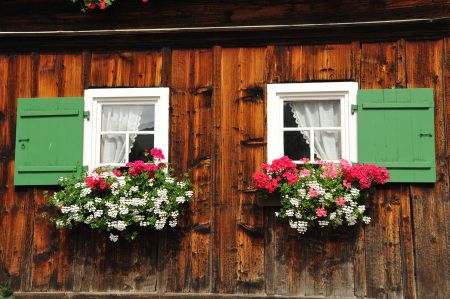 Another interesting point is the origin of the name, which can be traced back to the Walser ethnic group, which can be assigned to the Alemanni people. In the 13th century, the first settlers of this ethnic group from Valais appeared here, which can often still be seen in the dialect of the residents, the so-called Walser German. About 1000 years ago, the first Alemanni reached Goms in Valais on their hikes from the Bernese Oberland and gradually settled the upper Rhone Valley in today's Switzerland. One of the reasons for the medieval Walser migrations was the growing population pressure and the search for new agricultural land. The Walser migrations stand in a similar context here as the eastern settlements of German hordes.
Another interesting point is the origin of the name, which can be traced back to the Walser ethnic group, which can be assigned to the Alemanni people. In the 13th century, the first settlers of this ethnic group from Valais appeared here, which can often still be seen in the dialect of the residents, the so-called Walser German. About 1000 years ago, the first Alemanni reached Goms in Valais on their hikes from the Bernese Oberland and gradually settled the upper Rhone Valley in today's Switzerland. One of the reasons for the medieval Walser migrations was the growing population pressure and the search for new agricultural land. The Walser migrations stand in a similar context here as the eastern settlements of German hordes.
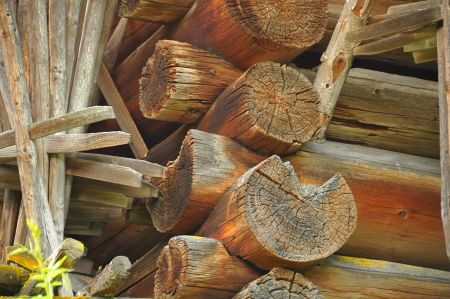 Over the years, the Walser were able to develop techniques that also made it possible to cultivate high mountain regions. The rulers of the areas concerned promoted this colonization through tax exemptions and the granting of special colonist rights. Thus, the new development of land in previously undeveloped regions offered the Walser the possibility of liberation from feudal serfdom. How these techniques worked in detail and to what extent they are still used today will also be part of the research during the longer stay in Kleinwalsertal that is being prepared.
Over the years, the Walser were able to develop techniques that also made it possible to cultivate high mountain regions. The rulers of the areas concerned promoted this colonization through tax exemptions and the granting of special colonist rights. Thus, the new development of land in previously undeveloped regions offered the Walser the possibility of liberation from feudal serfdom. How these techniques worked in detail and to what extent they are still used today will also be part of the research during the longer stay in Kleinwalsertal that is being prepared.
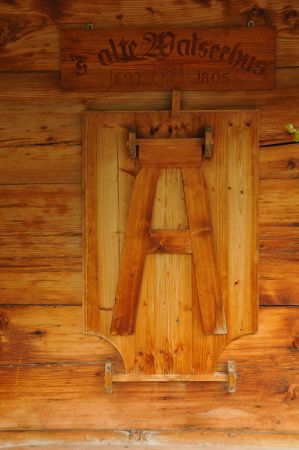 In the previous agreement with the Kleinwalsertal tourism office, it was agreed to expand the contacts and to travel to the Kleinwalsertal with the project caravan from around mid-August in order to then research and report accordingly. We are already looking forward to it.
In the previous agreement with the Kleinwalsertal tourism office, it was agreed to expand the contacts and to travel to the Kleinwalsertal with the project caravan from around mid-August in order to then research and report accordingly. We are already looking forward to it.
Please read as well:
Narona - Roman colony and trading town on the Neretva
Symbolic and beautiful - The White Cliffs of Dover
-
 Kleinwalsertal - first excursions after arrival
Kleinwalsertal - first excursions after arrival
Kleinwalsertal - first excursions after arrival
Kleinwalsertal - first excursions after arrival
-
 Kleinwalsertal - first excursions after arrival
Kleinwalsertal - first excursions after arrival
Kleinwalsertal - first excursions after arrival
Kleinwalsertal - first excursions after arrival
-
 Kleinwalsertal - first excursions after arrival
Kleinwalsertal - first excursions after arrival
Kleinwalsertal - first excursions after arrival
Kleinwalsertal - first excursions after arrival
-
 Kleinwalsertal - first excursions after arrival
Kleinwalsertal - first excursions after arrival
Kleinwalsertal - first excursions after arrival
Kleinwalsertal - first excursions after arrival
-
 Kleinwalsertal - first excursions after arrival
Kleinwalsertal - first excursions after arrival
Kleinwalsertal - first excursions after arrival
Kleinwalsertal - first excursions after arrival
-
 Kleinwalsertal - first excursions after arrival
Kleinwalsertal - first excursions after arrival
Kleinwalsertal - first excursions after arrival
Kleinwalsertal - first excursions after arrival
-
 Kleinwalsertal - first excursions after arrival
Kleinwalsertal - first excursions after arrival
Kleinwalsertal - first excursions after arrival
Kleinwalsertal - first excursions after arrival
-
 Kleinwalsertal - first excursions after arrival
Kleinwalsertal - first excursions after arrival
Kleinwalsertal - first excursions after arrival
Kleinwalsertal - first excursions after arrival
-
 Kleinwalsertal - first excursions after arrival
Kleinwalsertal - first excursions after arrival
Kleinwalsertal - first excursions after arrival
Kleinwalsertal - first excursions after arrival
-
 Kleinwalsertal - first excursions after arrival
Kleinwalsertal - first excursions after arrival
Kleinwalsertal - first excursions after arrival
Kleinwalsertal - first excursions after arrival
-
 Kleinwalsertal - first excursions after arrival
Kleinwalsertal - first excursions after arrival
Kleinwalsertal - first excursions after arrival
Kleinwalsertal - first excursions after arrival
-
 Kleinwalsertal - first excursions after arrival
Kleinwalsertal - first excursions after arrival
Kleinwalsertal - first excursions after arrival
Kleinwalsertal - first excursions after arrival
-
 Kleinwalsertal - first excursions after arrival
Kleinwalsertal - first excursions after arrival
Kleinwalsertal - first excursions after arrival
Kleinwalsertal - first excursions after arrival
-
 Kleinwalsertal - first excursions after arrival
Kleinwalsertal - first excursions after arrival
Kleinwalsertal - first excursions after arrival
Kleinwalsertal - first excursions after arrival
-
 Kleinwalsertal - first excursions after arrival
Kleinwalsertal - first excursions after arrival
Kleinwalsertal - first excursions after arrival
Kleinwalsertal - first excursions after arrival
https://www.alaturka.info/en/hiking-tours/6227-kleinwalsertal-in-vorarlberg-mountain-hiking-and-caravanning#sigProId90c6926ff8

